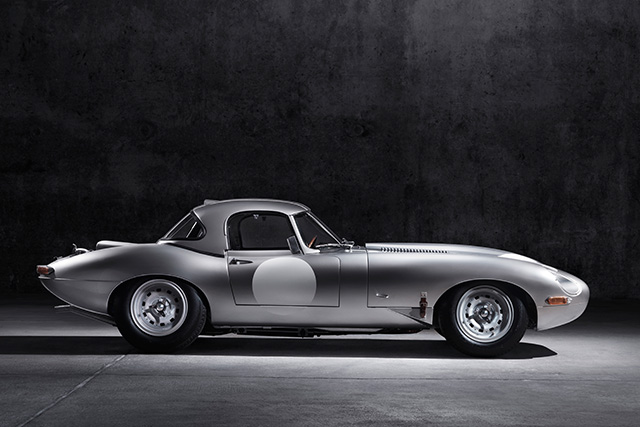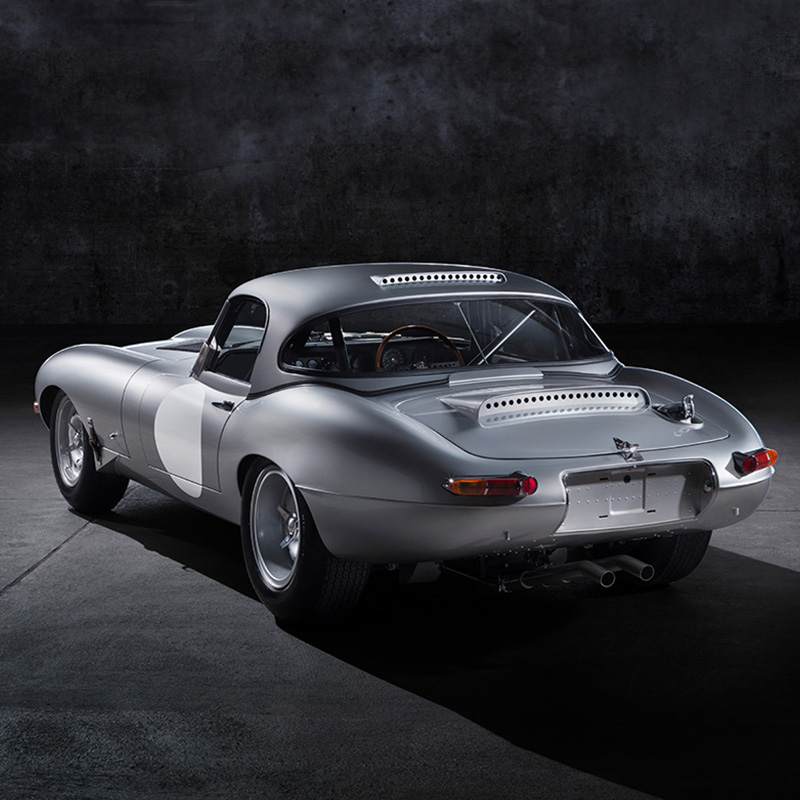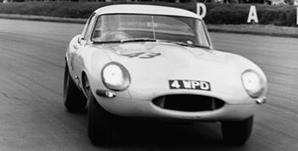

THE JAGUAR LIGHTWEIGHT E-TYPE REBORN
For the classic car aficionado and luxury motor collector, few cars hold the status of the Jaguar E-Type. Launched in the early 1960s, the original E-Type was a design revolution that turned heads and set benchmarks. Its beauty and performance secured a place in the automotive hall of fame.
Now that legacy is being reignited with the reissue of the rare, ultra-lightweight variant of the E-Type. But what’s changed? Let’s take a look.
WHAT IS THE CLASSIC JAGUAR E-TYPE?
Created in 1963, the original E-Type was the perfect blend of performance and style, with a long, sleek body that cut through the air with unparalleled grace. It was famously described by Enzo Ferrari as "the most beautiful car ever made," a testament to its enduring aesthetic appeal.
Its six-cylinder engine, which had already seen success in the D-Type, ensured the E-Type had the performance to match its looks, with a top speed of 150mph, making it sought-after amongst classic car lovers.
WHAT'S NEW WITH THE JAGUAR LIGHTWEIGHT E-TYPE?
Jaguar originally intended to produce 18 E-Types in the 60’s, but only 12 of these icons were produced. However, in 2014, the remaining 6 icons were constructed to the exact specifications of their original 1960s forebears – including the 3.8-litre straight-six engine.
While it maintains the visual and historical authenticity of the original classic, it’s been subtly revised to meet contemporary performance and safety standards. Here are some of the key differences between the original and Lightweight E-Types:
- The reborn Jaguar Lightweight E-Type carried approximately 114kg (250lb) less weight than a classic E-Type, enhancing its speed and agility.
- The 3.8-litre, fuel-injected, inline-six engine produces a blistering 340 horsepower. Engineers have capitalised on advances in manufacturing, using modern aluminium processes to create a body that's not just similar to that of the vintage model, but in many ways more superior.
The interior, with its spartan features, harks back to an era of pure driving experiences, where no-frills meant minimal distractions and maximum engagement. Every detail, from its Smiths gauges to its wooden steering wheel, seems plucked from a time capsule.




WHAT DOES THIS MEAN FOR CLASSIC JAGUAR COLLECTORS?
The revival of such an exclusive model naturally has an impact on the market. The original Jaguar E-Types are now some of the most sought-after classic cars, with values soaring. The recreation enters this rarefied market, commanding a significant price tag - one that's also reflective of its exclusivity and craftsmanship.
Its limited production ensures that this contemporary classic will become a collector's item in its own right. Owning one is not just about acquiring a car; it's about securing a piece of automotive heritage that few can claim. For those who have the means to purchase one, it’s a rare opportunity to celebrate a timeless symbol of automotive culture.
The Jaguar Lightweight E-Type reborn represents more than just a car; it's a statement about the emotional connection we have with vehicles and the lengths we're willing to go to preserve that relationship. It's a beacon for luxury, performance and craftsmanship, drawing a line between the past, present and future of motoring.
For information about this timeless classic, contact us – our team of specialists are always happy to help.
 Jaguar is to build six brand new ‘Lightweight’ E-types – the ‘missing’ six Lightweights that were never built from the intended 18-car series
Jaguar is to build six brand new ‘Lightweight’ E-types – the ‘missing’ six Lightweights that were never built from the intended 18-car series- Jaguar’s first ever ‘re-creation’ project, the all-aluminium cars will be assigned the six remaining chassis numbers which were originally allocated in 1963
- All six vehicles will be built as perfect reproductions and to the exact specifications of the original 12 cars first produced in 1963
- The first new Lightweight E-type will make its public debut later this summer. Further information will be released at that point
Jaguar is to build six perfect reproductions of the original, race-bred Lightweight E-type that was created in 1963. The new cars are the ‘missing’ six vehicles from Jaguar’s Lightweight E-type project, which originally started in February 1963 with the objective of building 18 ‘Special GT E-type Cars’.
Only 12 of the aluminium bodied Lightweight E-types were eventually built, the last in 1964, the remaining six designated chassis numbers having lain dormant, until now.
The new cars will be hand-built in-house by Jaguar’s finest craftsmen. Each car will be constructed to the exact specifications of their original 1960s forebears – including the 3.8-litre straight-six engine.
The Lightweight carried approximately 114kg (250lb) less weight than a standard E-type, thanks to its all-aluminium body and engine block, a lack of interior trim and exterior chrome work and a host of further weight-saving features including lightweight, hand-operated side windows.
Jaguar expects a high demand for the six Jaguar Lightweight E-types. Established Jaguar collectors, especially those with historic race car interests, will be prioritised amongst those potential customers who express interest.
Click here to find out more.
